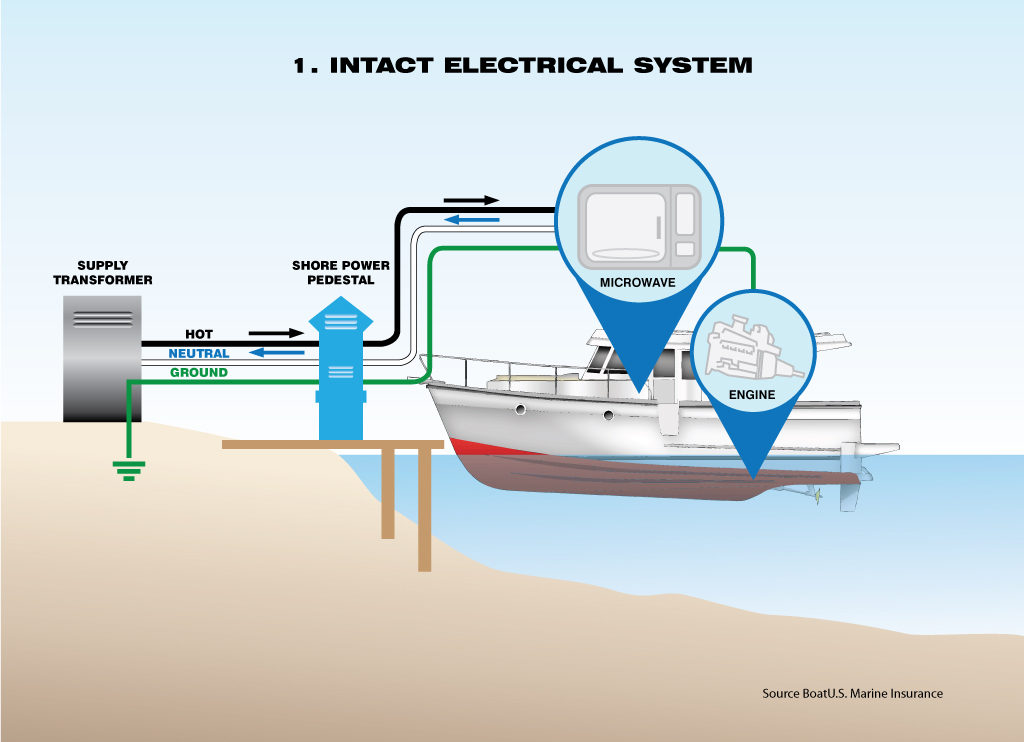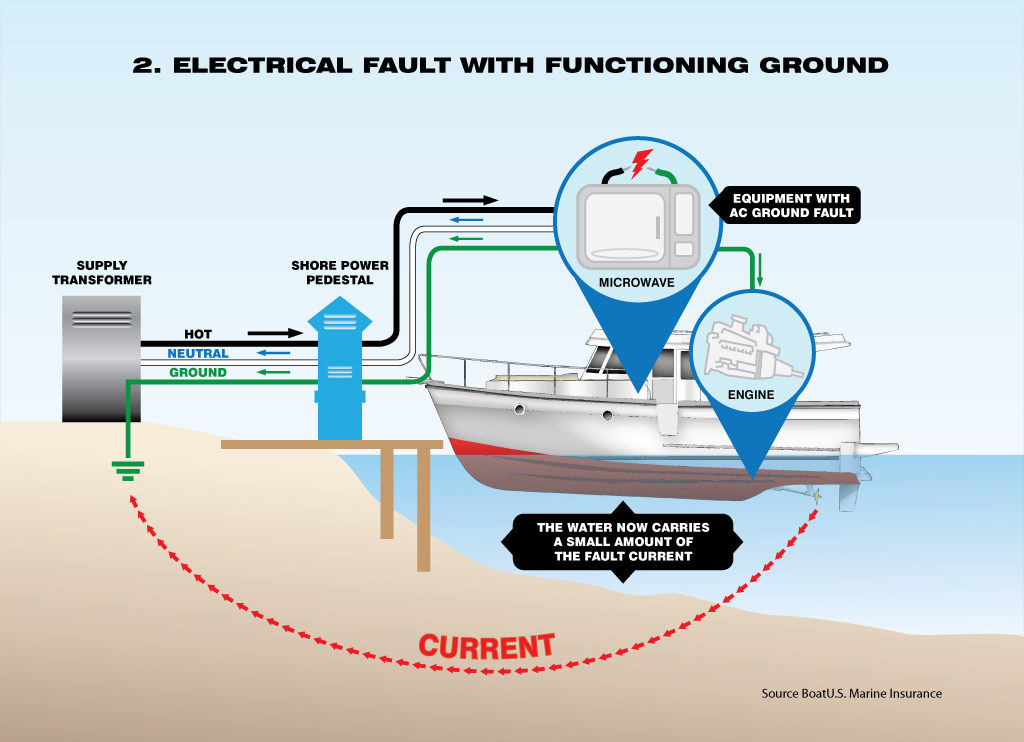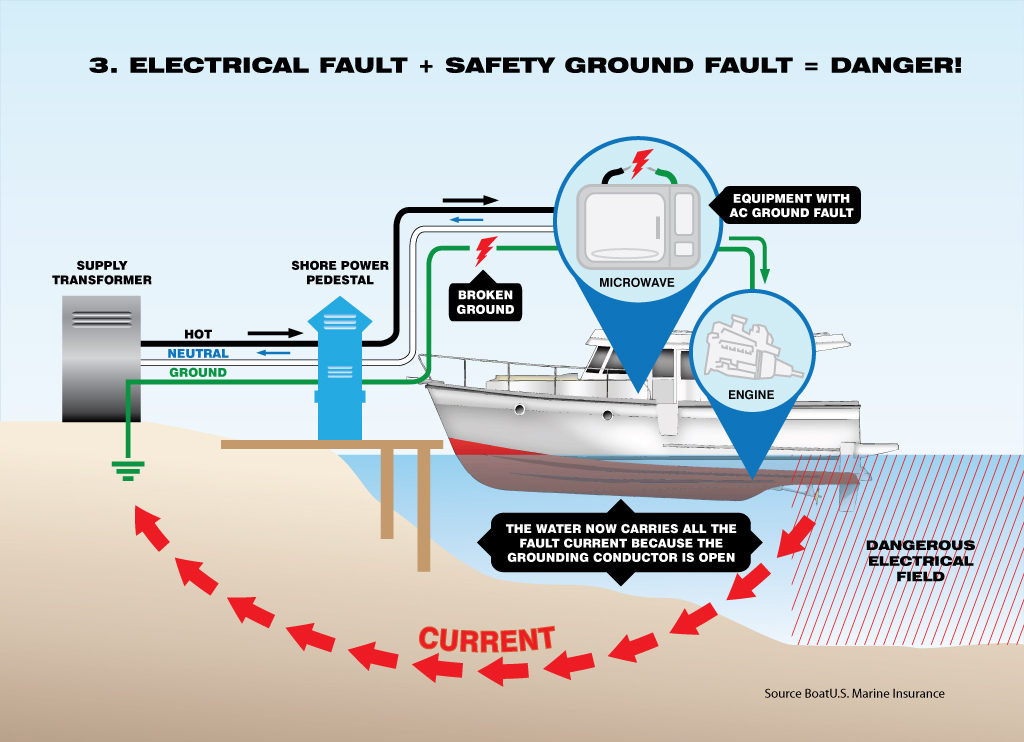Electrical Shock Drowning ESD – Part 2
Electrical Shock Drowning or ESD was discussed in Part one of this series. Part 2 will get into more detail about this infrequent but deadly situation.
There are two potential failures in a boat’s electrical system that put people on or around the boat at risk. In a properly functioning system, the same amount of AC flows in the hot and neutral wires.
Images courtesy of Boat U.S. http://www.boatus.com/
Happens when a wire or appliance leaks power?
Electricity may “leak” from it’s intended path in these two wires to ground. This condition is called a ground fault. A good example of this is an insulation failure in the wiring of an appliance. Notice the microwave (or any appliance using A.C. power) with the ground fault. This condition will result in a mild electric current in the water which will potentially paralyze a person in the water.
Electrical Fault with Functioning Ground
What happens when there is a leak in the ground wire?
A faulty ground occurs when the grounding path breaks through a loose or broken wire. For instance, a shore power cord ground wire may fail due to constant motion and stress.
Electrical Fault + safety ground fault = Danger
When these two conditions occur at the same time, the results may be tragic. The combination of a ground fault and a faulty ground results in metal parts in the boat and under water becoming energized. People on board the boat are likely to receive a shock from touching energized metal parts.
When this happens, a person swimming near the boat will be electrocuted immediately.
A Coast Guard sponsored study showed numerous instances of electrical leakage causing drowning or potential drowning even though the shock did not result in death.
What can prevent this from happening?
ELCIs (Equipment Leakage Circuit Interrupters) and the more familiar GFCI (Ground Fault Circuit Interrupters) are part of a larger family of devices. These devices measure current flow in the hot and neutral wires. They immediately switch the electricity off when an imbalance of current flow is detected. ELCIs and GFCIs that are also Residual Current Circuit Breakers (RCBO) provide overcurrent tripping protection also.
GFCIs are used as branch circuit ground fault protection at the 5mA threshold in wet environments. GFCIs protect against flaws in devices plugged into them but offer no protection from the danger of a failing hard-wired appliance, such as a water heater or cooktop.
An ELCI provides additional whole-boat protection. Installed as required within 10′ of the shore power inlet, an ELCI provides 30mA ground fault protection for the entire AC shore power system beyond the ELCI. ABYC regulations still require the use of GFCIs in environments described above.
Thanks to Blue Sea Systems for the information in this article. For more on how to protect yourself and your loved ones from electrical shock drowning, go to the BoatU.S Electric Shock Drowning Resource Center.
Where is PWS?
PWS is located in the center of Door County at 7325 St Hwy 57. It is located 1 mile North of County MM (Hwy 42) and South of Sturgeon Bay. Look for the intersection of Idlewild Road.
Want us to address a dock or boat lift topic for you? Feel free to give us a call.
Call Jerry at 920-493-4404 or Email Jerry@wisconsinpws.com for more information.








